Your cart is currently empty!
Author: jeremy
-
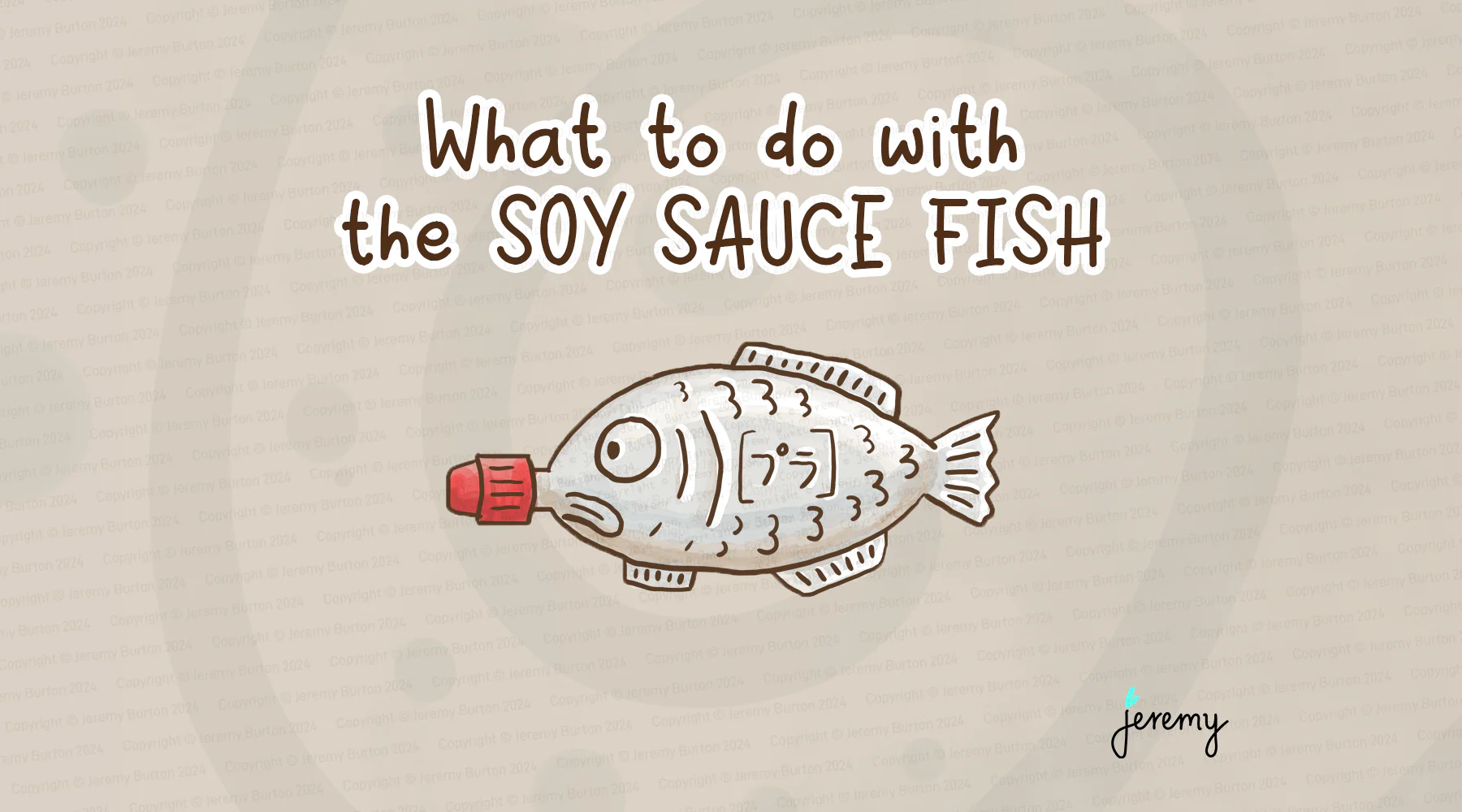
Soy sauce fish from sushi stores are marine hazards
Plastic soy sauce fish are marine hazards.
They’re one of the most common items found washed up on beaches. I refuse them at sushi stores when I’m offered but the staff. They’re single use plastic and for such a small amount of content. The amount of plastic outweighs the content inside.
You may have kept them to upcycle or just because they’re cute. Well they are cute. So if you have them stored up, here’s a few fun ideas to upcycle them! 🫶🩵
A little history
The lunch charm, was its original Japanese name. In 1954 Teruo Watanabe was asked to design up a small container for soy sauce that people could use at lunchtime.
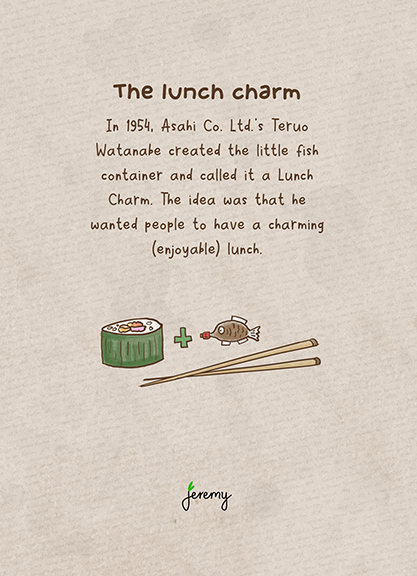
The design
The design criteria were set as, a sauce container like a straw that could be easily thrown away. It’s polyethylene recyclable plastic. He came up with the fish design and later a golden gourd and pig were also created.
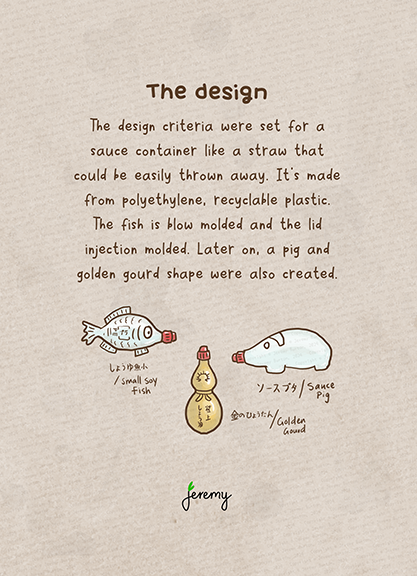
Soy sauce fish are major marine hazards
The plastic fish are one of the most common items washed up on beaches and they’re eaten by marine life.
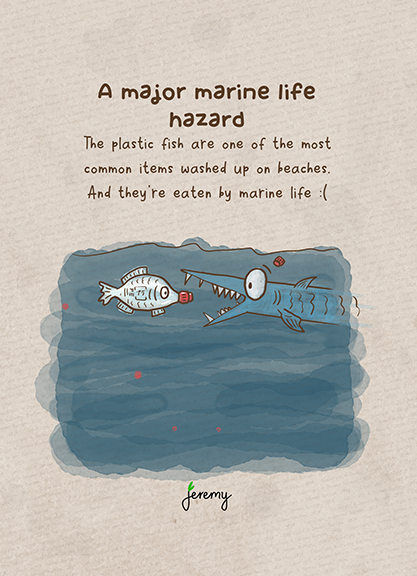
Don’t accept them from sushi stores
If they offer them to you, just say no.
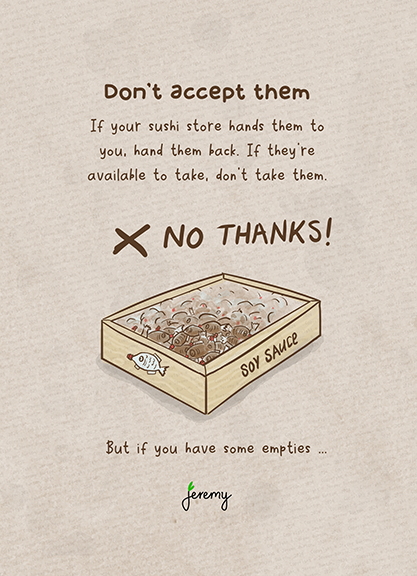
A few ways to upcycle them
Make a necklace! The little fish make cute necklace ornaments and you can fill them with colour.
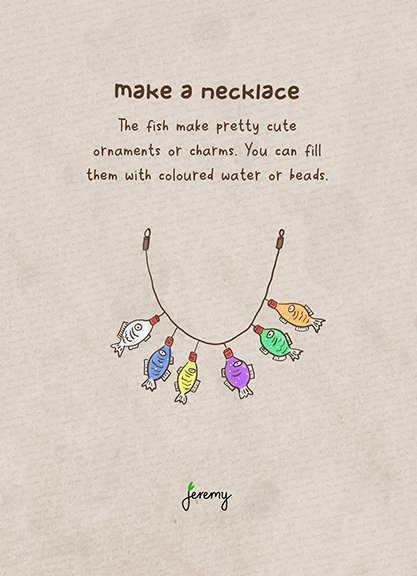
Fill a vase
They look awesome in water filled with colour. Just drop in some basil.
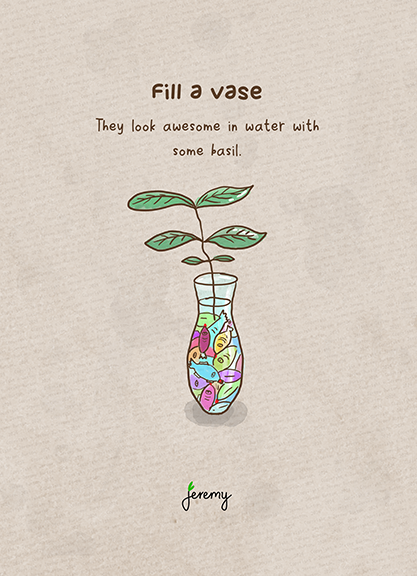
Decorate your phone case
Decorate your phone case with them. Use a hot glue gun and stick them on.
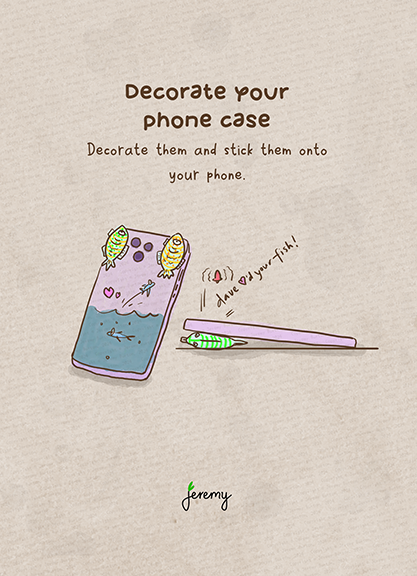
Make tiny fish lights
Cut off the cap (nose) and use them as fairy light shades. You could even colour them with permanent marker. Liiiiittt

Give them to a friend
They might enjoy chasing them.
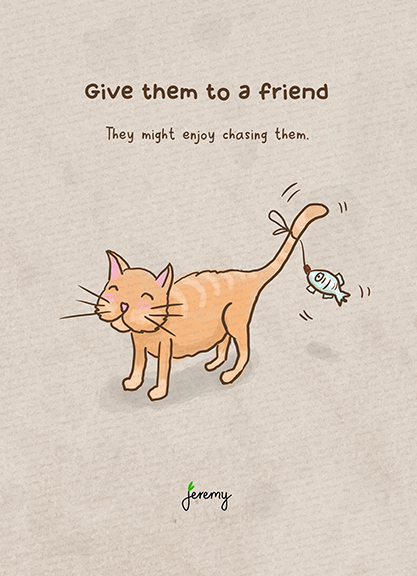
Thanks of your support. With your help we can reduce the number of soy sauce fish in the oceans.
Join me on Threads for more or subscribe at the bottom of the page for these posts in your email.
-
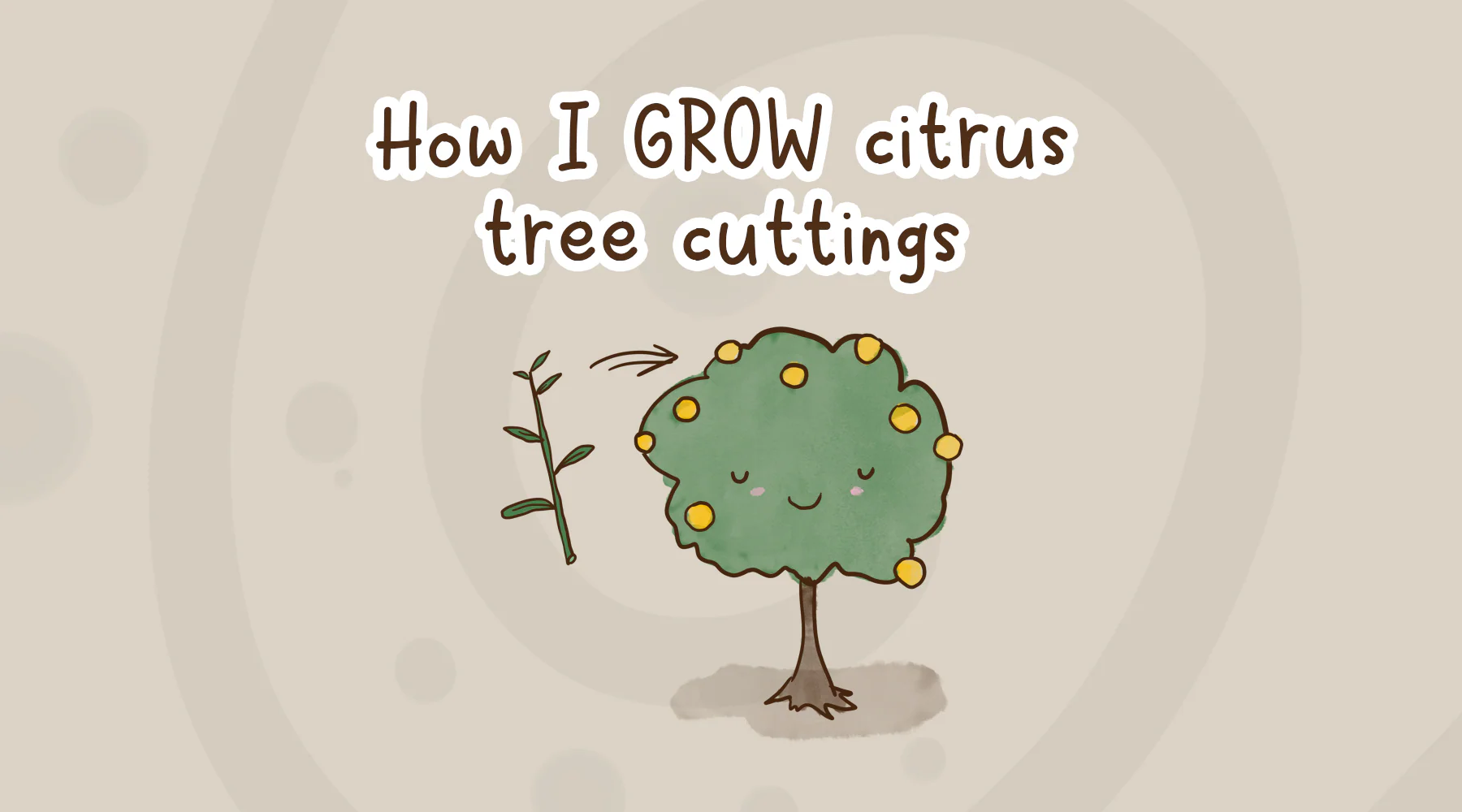
How I grow citrus tree cuttings
Citrus tree cuttings are one of the easiest ways to clone a fruit tree. Just by taking a good size cutting and getting it to strike, you can have a cloned tree very quickly. Here’s one of the ways I duplicate citrus trees in my garden.
In Australia I do it right after fruiting and the warmth of summer is perfect for striking the cuttings in a humid container.
Gather your cuttings
Figure out which tree you’d like to duplicate and choose the right time to take some thicker cuttings from it. A good time is when it’s not fruiting or flowering.
Cuttings that have a higher probability of survival are, 30cm / 12″ or longer and as thick as a pencil or thicker. The thicker and longer the better chance of it surviving. I get pretty much 100% strike rate with cuttings that are thumb thickness.
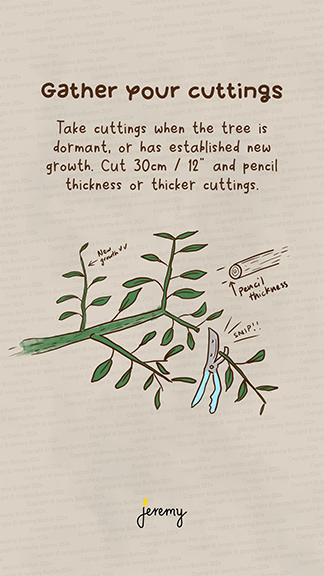
Preserve or plant
Plant your cuttings immediately (to strike them) or you can put them away to keep them for later. To preserve them, put them in a zip lock bag and put them in the fridge.
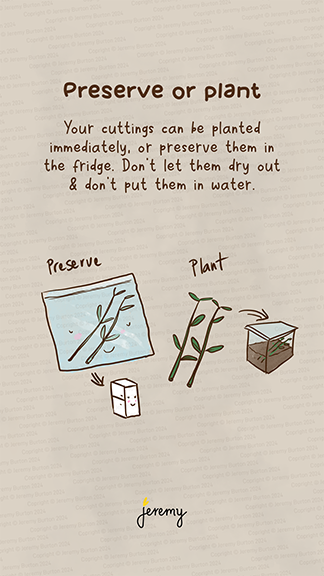
Plant in a container
To root your cuttings, plant them in a clear container with a removable lid. I’ve tested coco peat and soil and a mix seems to work well. But just soil will work fine.
Plant your cuttings at 45 degrees.
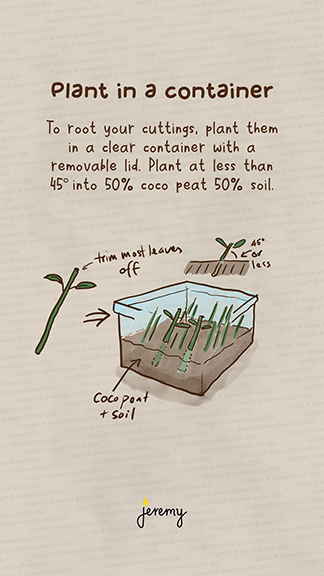
Keep them in the shade
Put the lid back on and keep the container in the shade. The soil needs to be slightly moist. Too wet and the cuttings will go mouldy and start to rot.
Open the lid and air them out every few days. A slightly loose fitting lid helps with trapping the humidity in but also letting oxygen in.
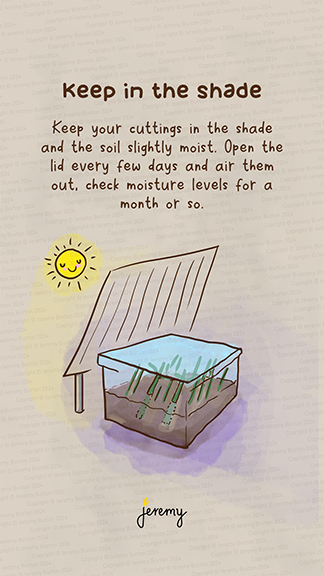
Wait till roots sprout
After a few weeks, new leaves will sprout from the cuttings. The roots won’t come until a month or two later. Once they have roots 10cm / 4″ long (you might be able to see from the side of the container), then they’re ready to plant out.
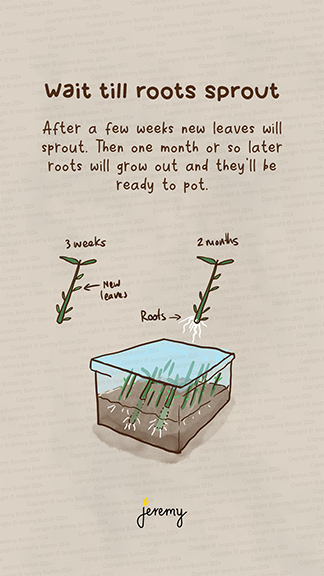
Plant your tree
Carefully remove the cuttings and plant your lil trees in pots. The roots are fragile so be careful. Keep them moist and in the shade for a couple of months. Then they should be ready to plant outside.
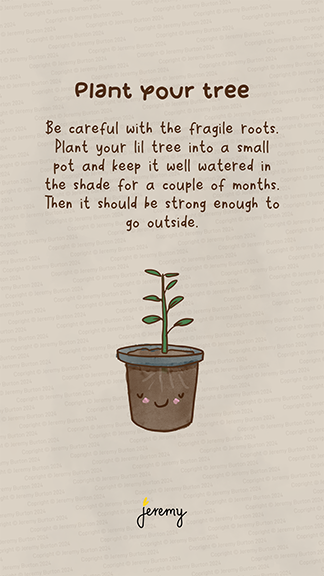
You’ve done it! You made yourself a whole bunch of new citrus trees. Not long before you’ll be enjoying the fresh fruit!
Leave a comment if you found this useful.
Join me on Threads for more or subscribe at the bottom of the page for these posts in your email.
-
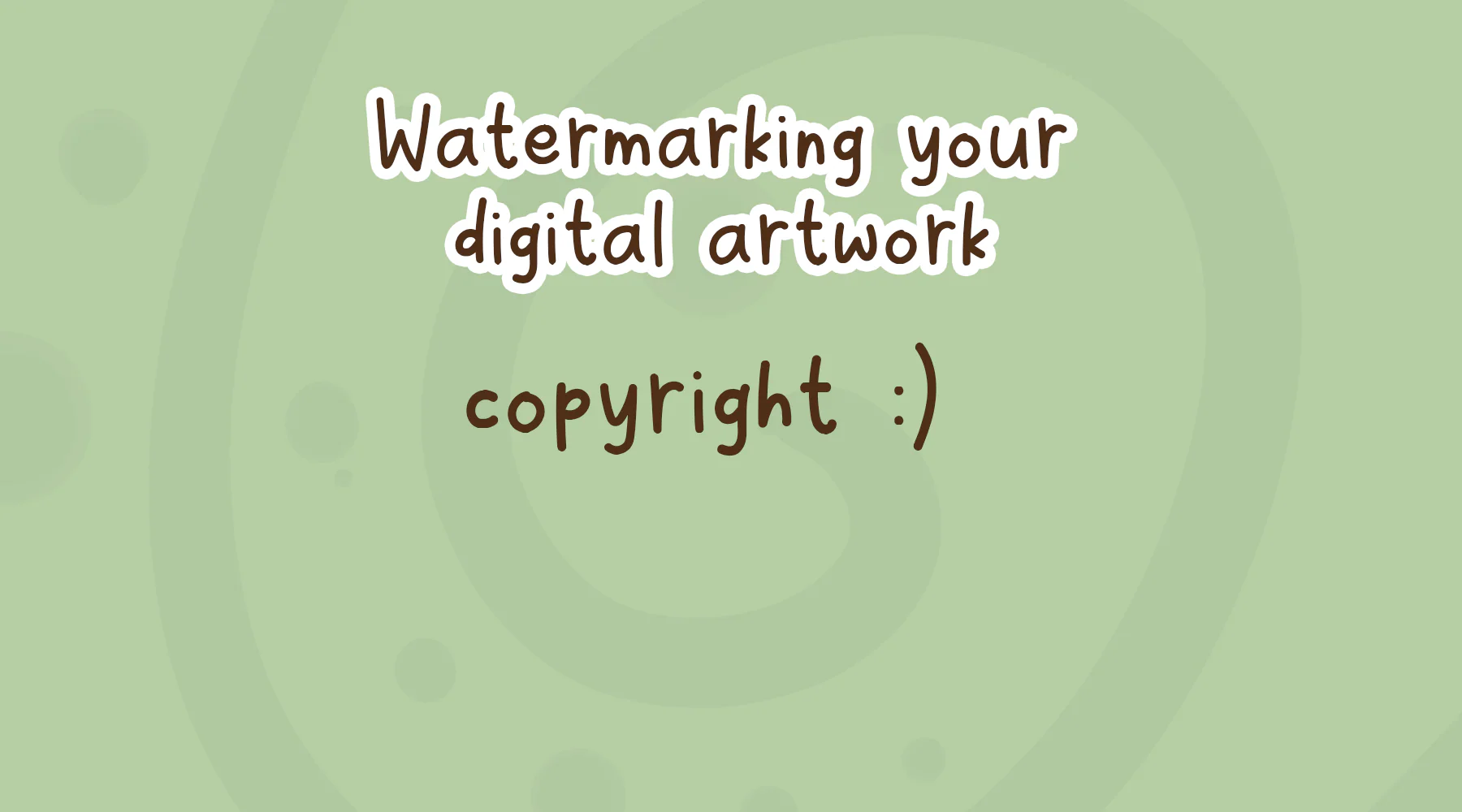
Watermarking your digital artwork
At some point as an artist, we come across the subject of watermarking artwork to protect it from theft or repurposing. You might already do this as a daily practice.
There are definitely those who disagree with watermarking though. I’ve read articles and seen vids that make the arguments about ruining the viewing experience, and that you’re shouting that your art is worth stealing (ego). Hmm, lots to consider I guess.
I decided to examine watermarking and test out how useful it is by putting my watermarked digital images through some AI services to see if they could easily remove the protection.
What we watermark
There’s plenty of stories online about people working with people who pretend to be customers, are actually scammers and who fake a commission request and steal the work in progress sketches or pre-work. It seems like a smart move to protect the WIP in some way, and also take upfront payments.
When I think about it, we’re not watermarking the actual painting, artwork, sculpture – we’re watermarking the marketing collateral, the images posted online, the proposals etc with the purpose of protecting against theft.
So how do the social platforms do it?
YouTube & others
YouTube provides the option to watermark all of your videos, just by adding a logo / image in your channel settings. I’ve just switched this on in my fledgling channel! It was easy, why not. It’s a very small logo in the bottom right corner, unobtrusive. I don’t mind that.
TikTok, Insta and others add their own watermarks generally in the middle of the image as a white text overlay. It’s clearly visible and placed in a clear space by their AI, yes note how it puts the wording in the clearest space of the image / video.

Here’s how and why I watermark my work
Here’s what I do:

I include my logo for brand purposes, not necessary but that’s my choice at the moment. The main watermark is a full overlay of text across the image. It’s a 9% opacity layer in Photoshop and I reduce it as much as I can to avoid disrupting the experience. Actually now that I take notice of it, it’s pretty visible in this image! I am testing making it even more transparent and less visible in more recent work.
My why
- Copycat sites – I do this because I’ve read too many stories of people having their work copied by automated copy systems like T*mu seems to have in place. I figure, why make it easy for them?
- Future plans – I don’t watermark my photographs and don’t see any need to do those. I can understand the need though if photography is your main trade. With my illustrations, I have multiple plans for and I really don’t want a T*mu or other person enabled to copycat the whole lot really easily. Not that my work is so awesome it would be, but it’s a lot of time invested and future plans for the work are not yet realised.
That’s my why, you may agree or disagree.
A quick overlay method
You can easily add a text or logo overlay in most image editors. Just add a layer over the top and adjust the transparency, placement and size. I use Photoshop and it’s a simple process. My templates have the layers all prepared. Btw some people recommend adding in the word copyright and the © symbol. Although I have it in my watermark overlay, it’s not necessary in my opinion. As creator you have copyright by default if it’s your own work.
Meta data
You can also add meta data to your images and videos, tools make it easy. Here’s how I very wrongly fill out my file info in Photoshop. I don’t really worry about it that much, it’s just a template I made and it’ll do! 🙂
Why add meta data? Well, it’s just another way to add digital copyright information to your work. It’s not visible, rather saved within the file.
The meta data is saved with the file, but as you may be aware, meta data is easily removed and for me this is just one more step that’s basically automated (including spelling errors lol, just noticed).
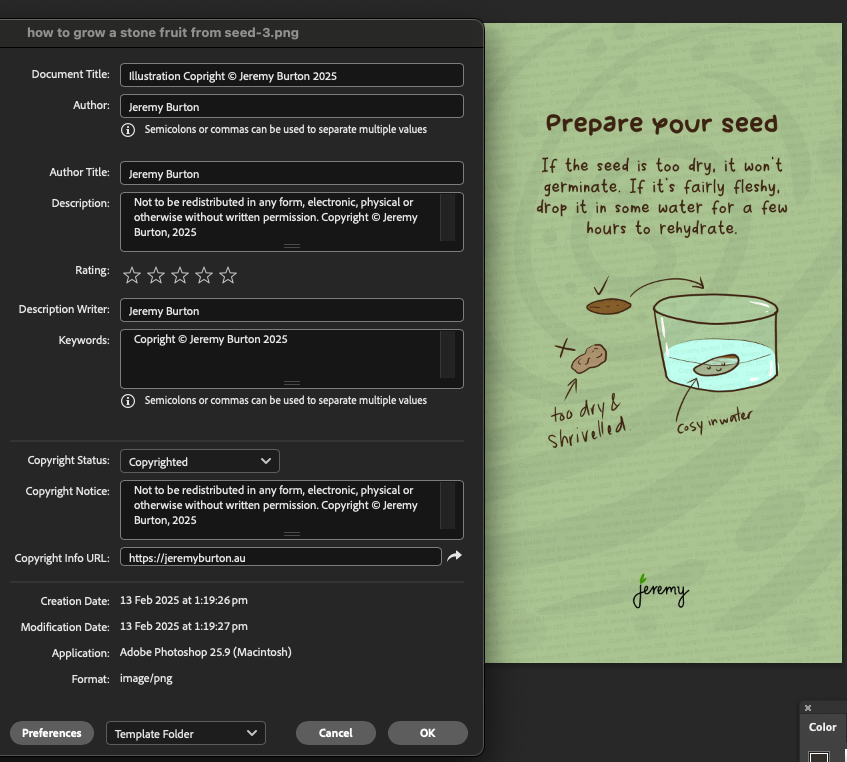
Threads seems to strip out all of the meta data on upload (from memory Facebook does too). If you don’t add in an ALT description when you upload, Threads automatically adds an AI generated description into the HTML.
Why in 2025, the social platforms still do not maintain the meta data of our content, is beyond me.
Testing AI platforms to remove my watermark
I decided to test out some of the AI systems available to reverse engineer my watermarking and see how easy or difficult it was to remove, just out of interest.
I started by chatting with meta.ai that advised me on the platforms to test, btw (funnily enough!) it was a lot more generous with the suggestions after I explained that I was testing my own watermarking. How smart are you.
I tested:
- meta.ai (for advice only)
- Inpaint
- Remini
- Watermarkremover
- Midjourney
Here are some of the test results, and I’m happy to report – they were all hopeless at removing the full image text overlay. I think they would easily remove a logo or single line of white text though. There is AI designed specifically for removing easily identifiable objects in an image / video.
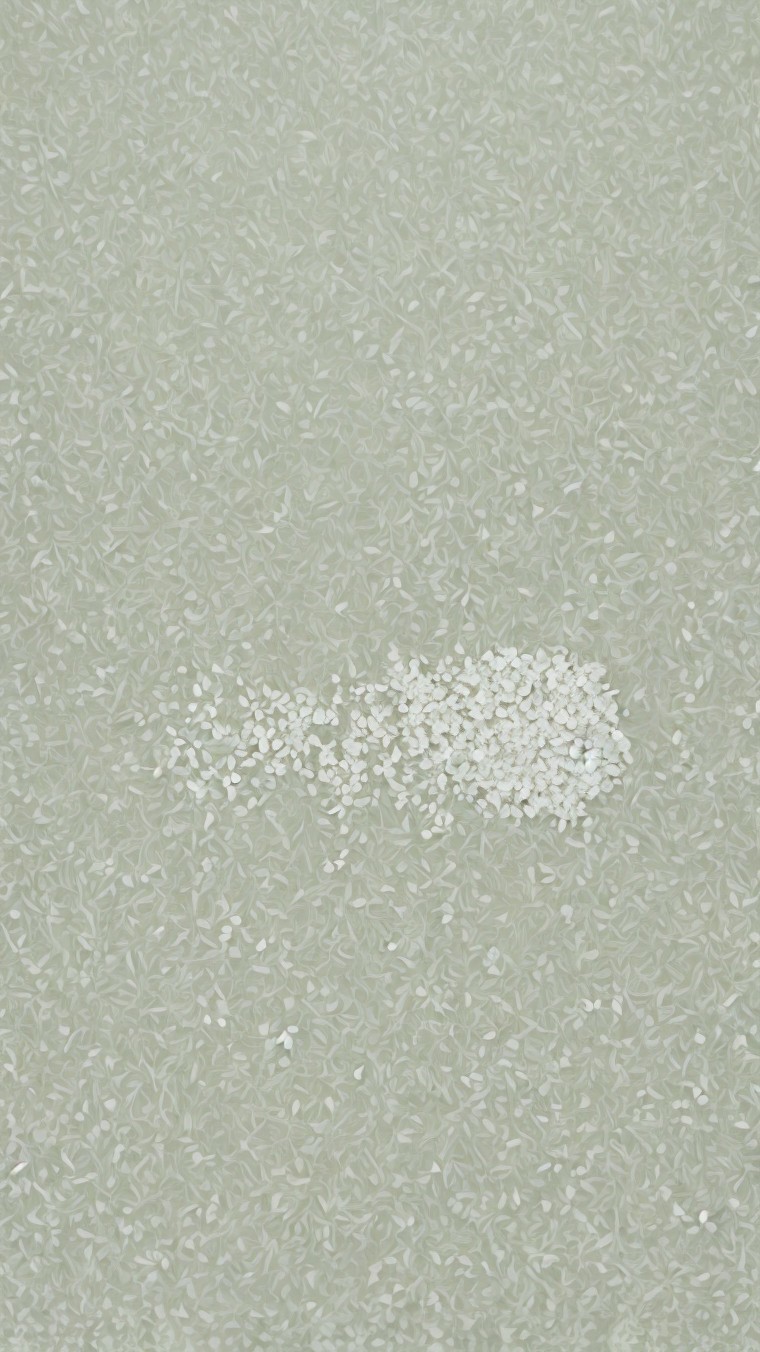

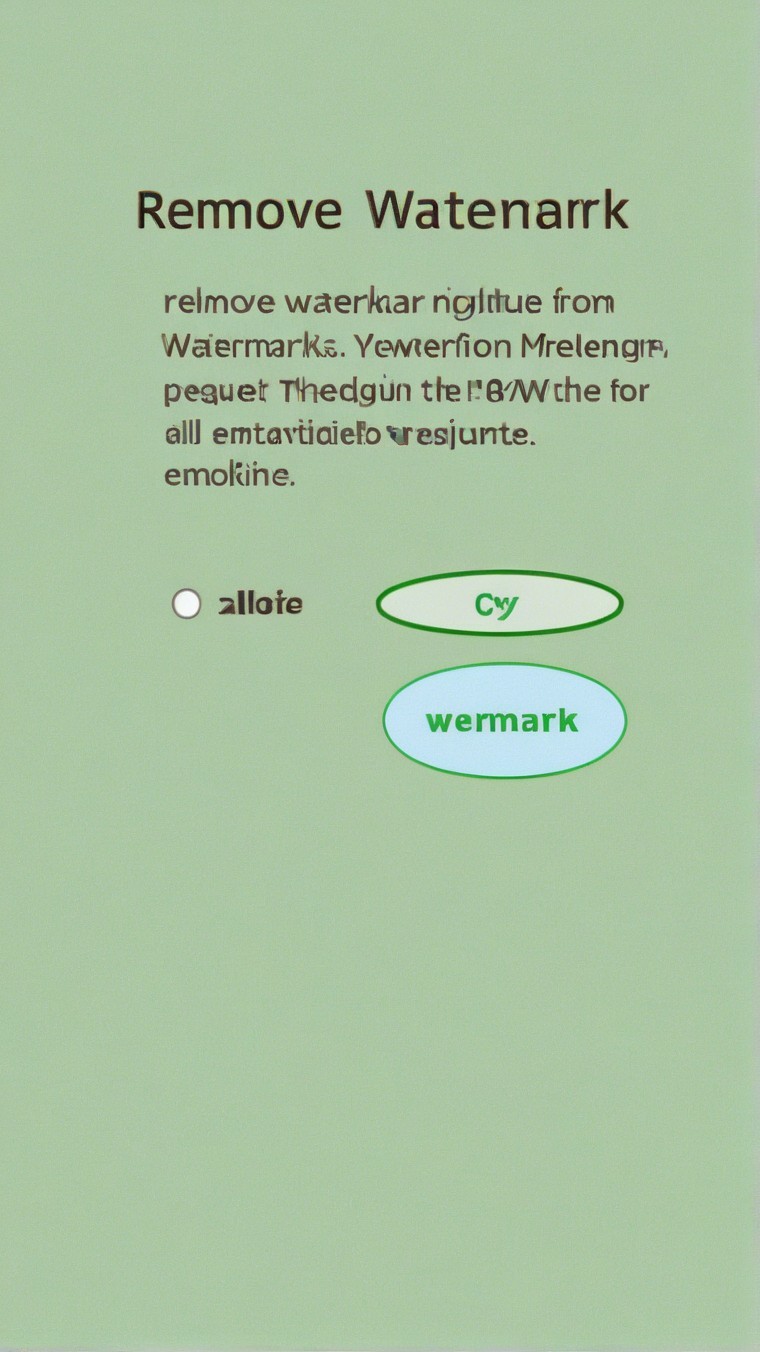
Midjourney AI btw, was just waaaay too creative, lol. Like this is awesome but … maybe my prompts suck?
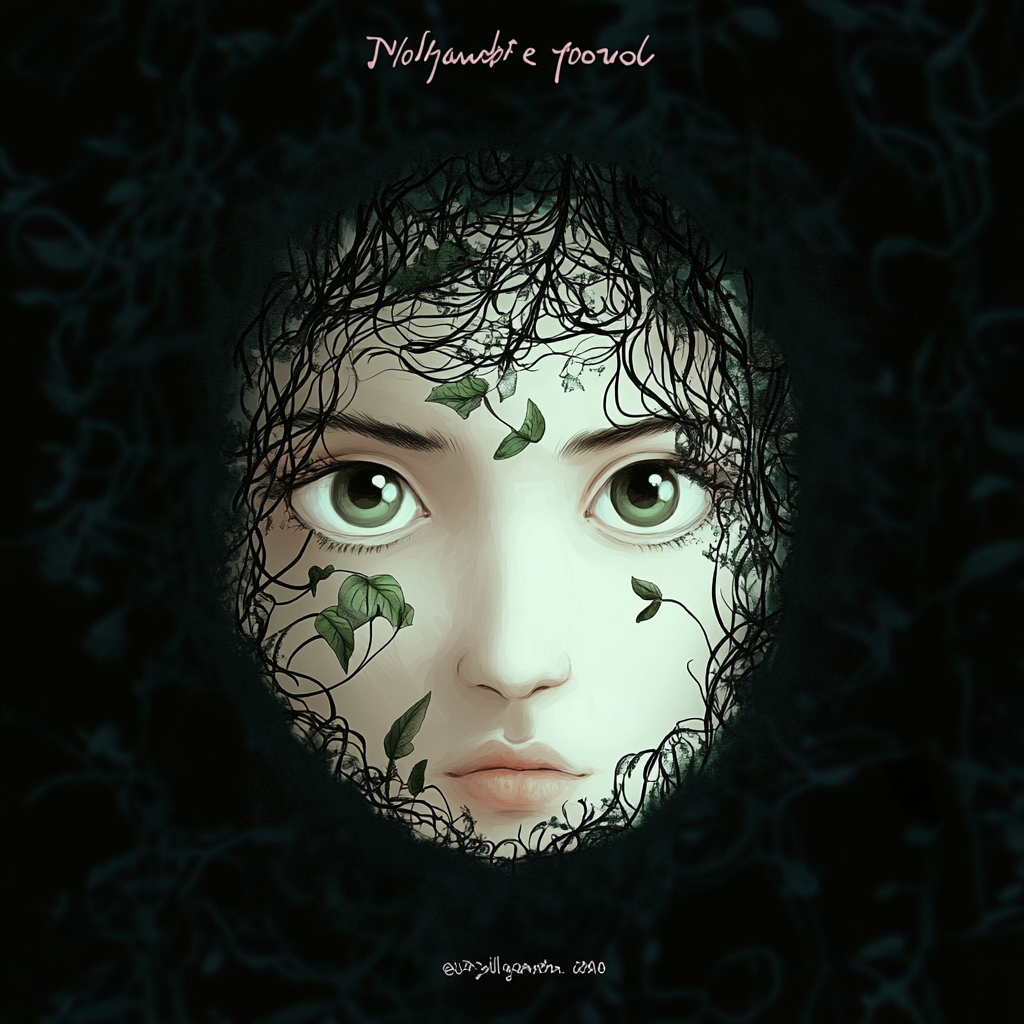
Out of curiosity, I asked meta.ai to watermark a generated image just to see what it did. Even when I badgered it to cover the entire image, all it would produce is this kind of a result.

Redbubble
Redbubble has an automated system that does this, puts crosses or your name through the images. It’s pretty robust, although I was still able to get a 3000 x 3000 pixel sized image out of it (this is my image from my Redbubble account btw), that would be easy-ish to steal and repurpose.
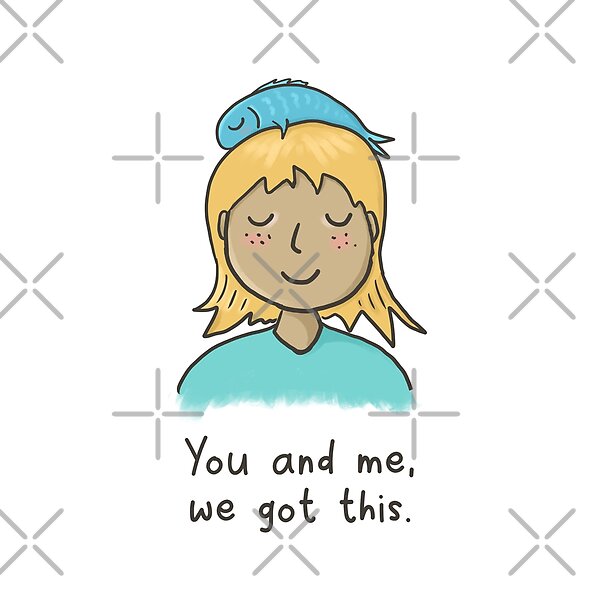
Alternative options
There are lots of alternative ways to do this and here are a few:
- As others have suggested elsewhere, you can partially shoot your art and exclude critical parts
- Capture it from obscure angles
- Use interesting lighting
- Put yourself in front of the art
Isn’t there anything better?
There is an initiative that larger organisations have joined to make a batter way to track content in an age of AI-gen. Check out the Content Authenticity Initiative. It seems a real problem at the moment where some individuals & companies are taking people’s art, putting it through AI and then reselling it as their own (theft).
You can join the initiative as a supporting member here – https://contentauthenticity.org/membership/
It’d be great to have some kind of tracking and authenticity implemented by the AI platform owners.
So what’s the call, should I watermark my digital artwork?
Your call. I choose to use the function on YouTube, it was so easy and saves me having to do anything manually.
In any imagery I create that is to be productised (made into books, merch etc), I use the subtle background text option that seems to win against the AI, for now!
The cute little handle tag in the middle of the image / video is okay too. It’s more like a signature, but it’s very easy to remove though.
I don’t mind a subtle watermark. Let me know your thoughts, do you watermark your work?
Join me on Threads for more or subscribe at the bottom of the page for these posts in your email.
-
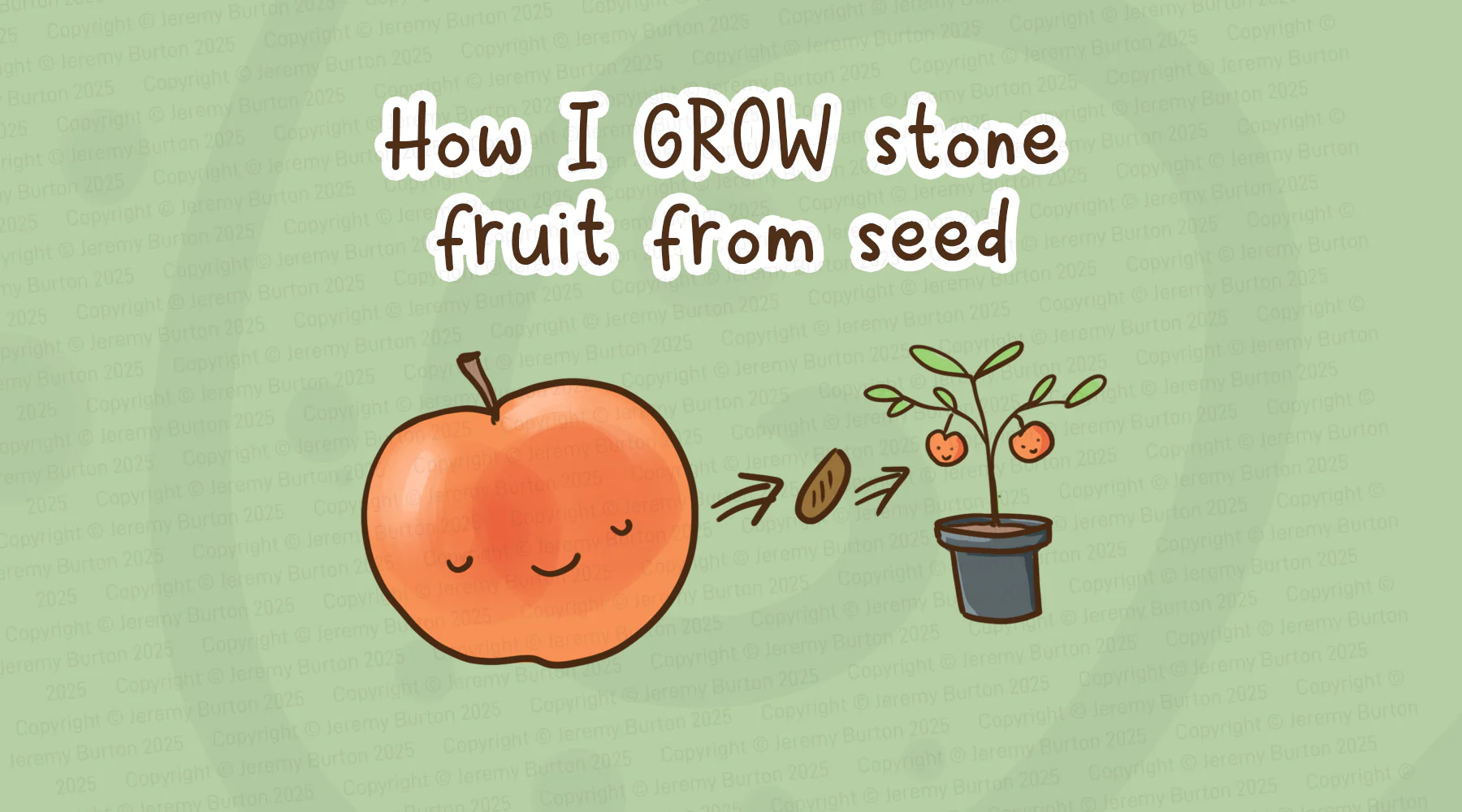
How I grow stone fruit trees from seed
How I grow stone fruit trees from seed. There’s a huge variety of stone fruit and if you’re lucky to live in a climate where they grown, they’re so delicious and amazing trees to have in the garden.
Grab your favourite stone fruit
In this case I chose peaches. I love the white peaches in particular. It’s a habit I picked up in Japan where the white peaches are so big, they’re a meal in one. Eat your fruit and save the pit.
Give it a rinse to get the flesh off, it will be easier to handle.
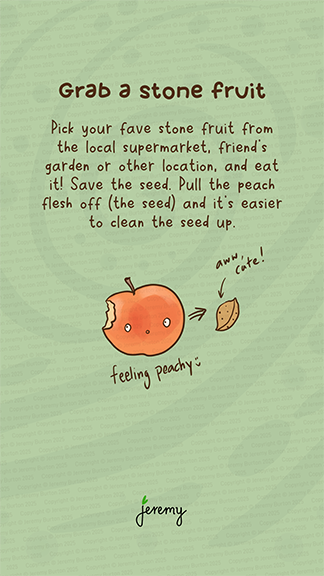
Hammer time
Grab a hammer (or you can use something else solid – a brick) and hit the pit gently on the seam. It will eventually crack open. Hit it repeatedly but gently. If you hit it too hard you’ll likely smash the soft seed inside. It takes practice.
Check the quality of your seed.
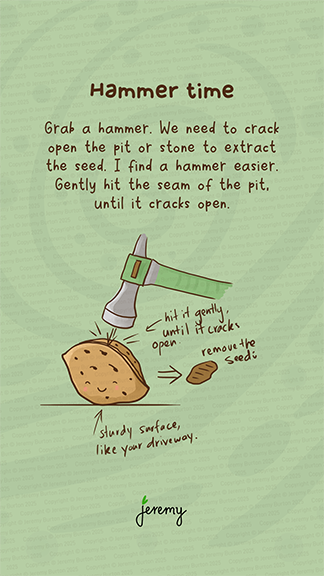
Prepare your seed
If the seed looks pale yellow and dried up, it is likely a goner. Your seed needs to be round and firm. Put it into some water for a few hours to rehydrate.

Plant your seed
last your seed into a pot, a sandy soil seems to be good. 2-3cm or 1″ deep is plenty. Keep the soil moist and put it in the shade. Full sun will likely kill the seed.

You got peaches!
After a month or so, your seed will germinate and a small seedling will grow. Keep it in the shade and grow it to 40cm or 1ft. Bigger if you’d like. Then plant it in the ground in a sunny position, water it often and mulch the base.
Put plenty of organic matter in the hold when you plant it. Fruit trees love that. It will take a few years, but eventually you will have grown a beautiful peach tree that bears lots of yummy peaches!
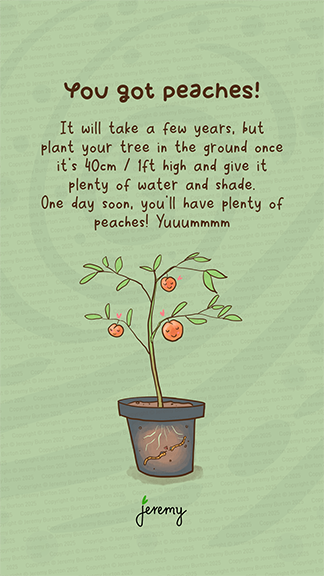
I’ve grown lots of stone fruit trees this way. I have several nectarines growing via this method at the moment. Good luck!
Join me on Threads for more.
-

Sketching ideas – the ideation process
This is the process that flows for me, and varying this is often a good thing. I grab paper and pencil and draw everything out on a page, fill it and keep going until the ideas run out.
Then I work on refinement, cleaning up the sketches, overdrawing, redrawing until I get the images I’m after. I often find during this stage that new ideas pop up and a million variations can be made, so it’s important to stay focussed a little. The wandering imagination is great but needs a little guidance.
I use A4 sketchpads, get them from Officeworks or similar at a reasonable price. Because I sketch everyday, this is a good size for me. I’ll often take the A5 though on the road because it’s more compact for travel.
Depending on how I’m feeling, I’ll switch up between a hard HB pencil or a softer 2B. Sometimes it’s nice to sketch quick and dark. The HB is great for linework though. Then I go over it with a permanent fineliner. There’s many days where I just use the finalise too, it’s saves time and with confidence it gets easier.
What have you sketched today?
